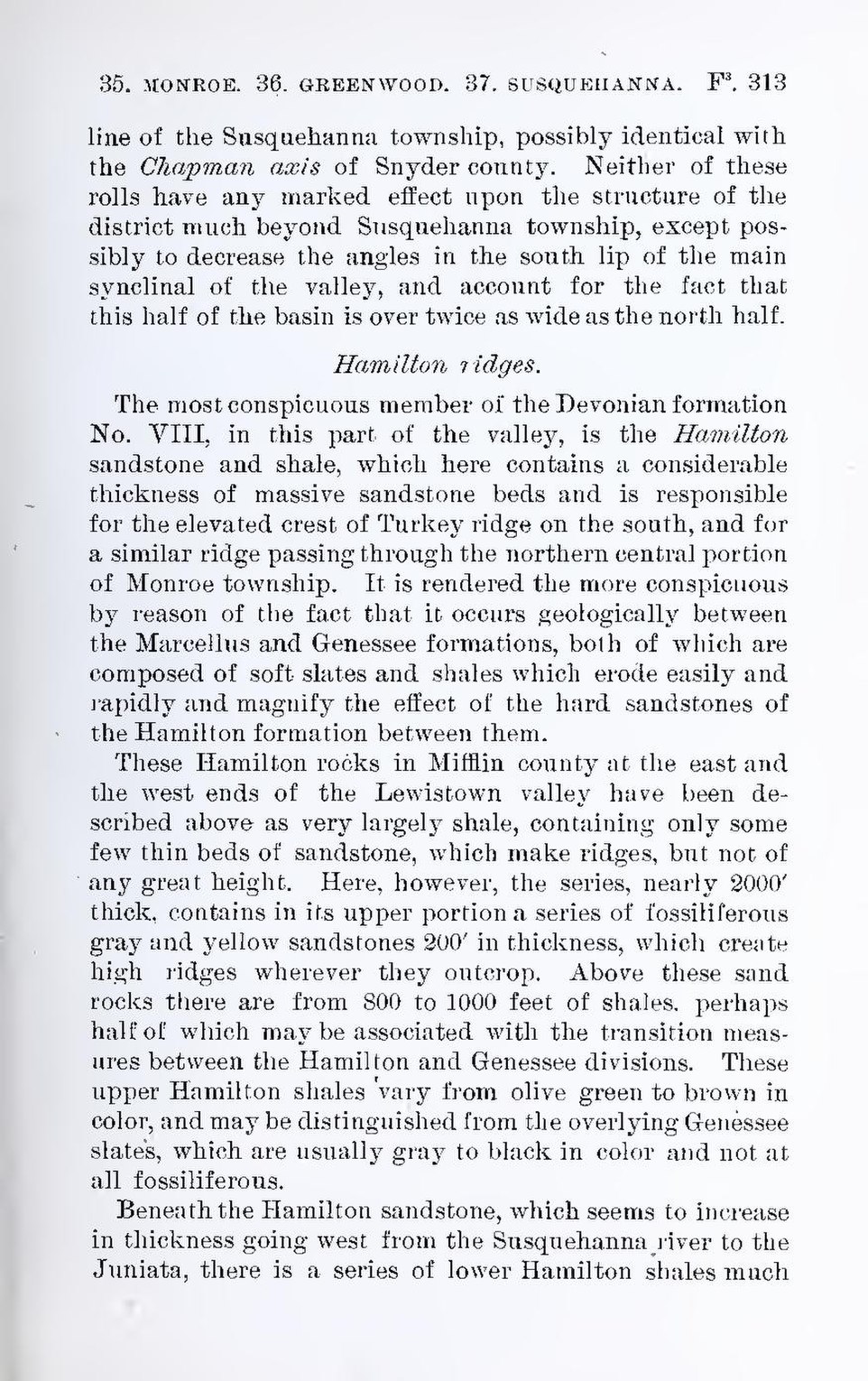line of the Susquehanna township, possibly identical with the Chapman axis of Snyder county. Neither of these rolls have any marked effect upon the structure of the district much beyond Susquehanna township, except possibly to decrease the angles in the south lip of the main synclinal of the valley, and account for the fact that this half of the basin is over twice as wide as the north half.
Hamilton ridges.
The most conspicuous member of the Devonian formation No. VIII, in this part of the valley, is the Hamilton sandstone and shale, which here contains a considerable thickness of massive sandstone beds and is responsible for the elevated crest of Turkey ridge on the south, and for a similar ridge passing through the northern central portion of Monroe township. It is rendered the more conspicuous by reason of the fact that it occurs geologically between the Marcellus and Genessee formations, both of which are composed of soft slates and shales which erode easily and rapidly and magnify the effect of the hard sandstones of the Hamilton formation between them.
These Hamilton rocks in Mifflin county at the east and the west ends of the Lewistown valley have been described above as very largely shale, containing only some few thin beds of sandstone, which make ridges, but not of any great height. Here, however, the series, nearly 2000’ thick, contains in its upper portion a series of fossiliferous gray and yellow sandstones 200′ in thickness, which create high ridges wherever they outcrop. Above these sand rocks there are from 800 to 1000 feet of shales, perhaps half of which may be associated with the transition measures between the Hamilton and Genessee divisions. These upper Hamilton shales vary from olive green to brown in color, and may be distinguished from the overlying Genessee slates, which are usually gray to black in color and not at all fossiliferous.
Beneath the Hamilton sandstone, which seems to increase in thickness going west from the Susquehanna river to the Juniata, there is a series of lower Hamilton shales much
